

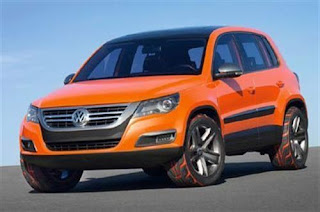


There’s something slightly weird about this scene. We are about to drive the daunting 12.9-mile Nürburgring Nordschleife track in Germany. In a Lexus. Okay, it’s the exotic LFA, a Ferrari-fighting supercar that will cost about $350,000. But the company built its reputation on smooth, refined, and perfectly nerve-calming cars, so why does the LFA exist? In what parallel universe is this thing remotely Lexus-like?
Lexus claims multiple justifications for the LFA program. The car, it says, casts a halo over the Lexus F line of performance machines. It’s also a way for Toyota to explore new technologies, particularly carbon-fiber construction. And since Lexus says it will be selective about whom it will sell to—car collectors and high-profile individuals who use the car rather than park it—the LFA should raise the cachet of the brand as a whole.
For all that marketing happy-talk, the 2012 LFA is a serious outlier in the Lexus lineup and has had a convoluted gestation. The program started in 2000, and Lexus showed the first concept car at the Detroit auto show in 2005. Next, a convertible version appeared at Detroit in 2008, though it has since been canceled. In the interim, LFA prototypes were spotted testing at the Nordschleife, and further, two race-prepared cars entered the 24-hour race at the Nürburgring in 2008 and 2009. But until now, the company hasn’t said anything about production intent. Lexus is finally ready to admit that a mere 500 will be made, with production starting in December 2010.
Although the car is extravagantly expensive, Lexus says it will lose money on every one. We believe it. The last car that incorporated a similar level of technology, performance, and exclusivity was the $650,000 Ferrari Enzo. At $350,000, the LFA begins to look like something of a bargain. The LFA is an exotic, two-place, front-engine, rear-wheel-drive coupe. The chassis and body are made largely of carbon-fiber composite, just like those of an Enzo or a Mercedes SLR McLaren. Per Lexus’s scales, the car weighs 3263 pounds—less than a Corvette ZR1.
The engine is a 4.8-liter V-10 codeveloped with Yamaha. It’s a compact unit that makes 553 horsepower at 8700 rpm and revs to a giddy 9000 rpm. Maximum torque of 354 pound-feet peaks at 6800 rpm, with 90 percent available between 3700 and 9000 revs.
The rear-mounted, six-speed automated manual transaxle incorporates a Torsen limited-slip differential. Control arms comprise the front suspension, with a multilink arrangement at the back. To keep weight down, the suspension pieces and the remote-reservoir monotube KYB dampers are aluminum.
The Brembo carbon-ceramic brake setup consists of discs 15.4 inches in diameter and six-piston monoblock calipers up front, with 14.2-inch discs and four-piston calipers at the back. Forged aluminum 20-inch BBS wheels sit inside bespoke 265/35 front and 305/30 rear Bridgestone Potenza tires. There are four driving modes: automatic, normal, wet, and sport; the driver can also select manual shift speeds. In sport mode, the stability-control system allows for greater amounts of yaw, but the system can be switched off completely.
When it comes to the styling, there’s a definite Japanese aesthetic, what with all the sharp edges and matte-black vents. But it’s not a head turner like the Enzo or even a Lamborghini Gallardo. We definitely wouldn’t order one in matte black—one of 30 available colors—because it looks like someone forgot to paint it properly.
But there is function underpinning the somewhat sedate form. According to chief engineer Haruhiko Tanahashi, an advantage of using carbon fiber for the bodywork is that it’s possible to make very sharp edges and cutoffs that improve aerodynamic performance. The LFA has a reasonably low coefficient of drag (0.31), and Tanahashi says that the car produces more downforce than any of its competitors. Even the inside edges of the door mirrors are shaped to guide air into scoops over the rear fenders that feed the rear-mounted radiators. A large rear wing incorporating a Gurney flap pops up at speeds above 50 mph.
The interior is restrained but tasteful. The car we drove had a mixture of supple leather, carbon fiber, Alcantara, and “satin metal” adorning the cockpit. Lexus will offer seat coverings in 12 shades of leather or 10 alternate hues of Alcantara, with three color choices for the Alcantara headliner. “Roomy” describes the cabin, although luggage space is minimal. The supportive bucket seats have eight-way power adjustments, and the driving position is superb. The minor controls are as easy to find and use as in a standard Lexus sedan, and the LFA even has the same mouse-style operation for its multifunction center-console screen as in an RX350 sport-ute.

1969 Lamborghini 400GT Coupe - Over 10,000 Remarkable Cars and Trucks at RemarkableCars.com
1969 Lamborghini 400GT Coupe
Final Bid: $ 254,100.00
Russo and Steele Auction Scottsdale 2008
Consignment # 7488
This is a 1969 Lamborghini 400GT 2+2 with only 20,700 original miles. The chassis number is 1327, which is towards the end of the production run. It is possibly the lowest mileage car in the world. Only 242 of these were made and even fewer survived. No expense spared in its restoration. Interior was left alone as original for it has a charming cognac dark tan interior in awesome condition. Newer paint, new Weber carb's, restored Borranis, and engine was rebuilt. It is in show quality condition!
Russo and Steele
5230 S. 39th Street
Phoenix, AZ. 85040
Phone: 602.252.2697
Fax: 602.252.6260
Website: www.RussoandSteele.com


If the original Fiat 500 were still around it would be celebrating its 50th birthday. This twin-cylinder, puttering bubble of a car helped motorise postwar Italy, driving its way into the heart of the nation, and much of Europe too.
Alas, the last Fiat 500 rolled off the production line 22 years ago but, inspired by the success of other relaunched classics like the VW Beetle and the Mini, Fiat has revived it. The (re)launch party was in Fiat’s home city of Turin, accompanied by a fireworks display. Fiat has more to celebrate than the rebirth of its most famous product; the company is now in profit after three perilous years of loss that had its survival in doubt. A fast-renewing range – it is also about to release the Bravo hatchback – has turned its fortunes around.
This new Fiat 500 makes you pleased that the Italian company didn’t go the way of Rover. A glance at it has you smiling – this is an old friend in modern wrapping. You will be amused by the reappearance of the circular headlamps that created the earnest little face of its predecessor, and the Mona Lisa-like smile suggested by the chrome strip on its nose. There are retro references inside too, including a circular instrument pod and a body-coloured dashboard.
Though instantly identifiable as an interpretation of the original, the substance of this new 500 couldn’t be more different. The 1957 edition was rear-engined, its air-cooled twin cylinder hard pressed to push the Fiat far beyond 60mph. Today’s 500 is based on the Fiat Panda, its four-cylinder water-cooled engine driving the front wheels. This time you get a choice of engines, including a 69bhp 1.2 litre petrol, a 100bhp 1.4 litre twin-cam six-speed version of the same engine, and a 75bhp 1.3 litre turbodiesel.More impressive still is that this baby car, aided by seven airbags, scores the full five stars in the Euro NCAP occupant protection crash test. It has antilock brakes as standard and can be ordered with electronic antiskid control.
But enough of the serious stuff: this car is meant to be fun and in that spirit Fiat will offer it with myriad paint jobs, trim and accessory options. There are also 100 accessories to choose from including a fragrance diffuser, a navigation system, chromed door mirror capping, a ski rack and an additional front bumper bar just like the one worn by deluxe versions of the original 500.
None of it would matter much if this Fiat didn’t measure up, but the good news is that it is a thoroughly capable and hugely enjoyable car to drive. It is both refined and quiet: conversation is easy even at the 100mph maximum of the basic 1.2 tested, and the lack of wind, road or engine noise at speed makes long journeys – for two, at least – entirely palatable. There’s room for four but adults will feel confined, and they’d have to travel light because the boot is compact. However, for a city car, accommodation is fine.
Although the 1.2 is not the briskest thing its lower power and lower price are true to the spirit of the original, and the engine’s smoothness makes you more than happy to work the gearchange hard, just as old 500 owners did. They would have had to double-declutch to deal with the unsynchronised cogs, whereas the new box is light of movement, its lever capped with an amusingly oversized gobstopper of a knob.
As with many Fiats, the power steering has two settings, the lighter for town work, and it changes the 500’s direction with alacrity. That makes it a game partner on a twisty road. It’s not quite as sharp as a Mini, or Ford’s ageing but still excellent Ka, but it’s good enough to be fun. Better still is a surprisingly pliant ride, and a robust feel over rough roads, confirming the impression that this is a very well made little car.
Quality, claims Fiat, is of a higher order than Toyota achieves, and underpinning this claim is an extended warranty – admittedly optional – that will cover the car for five years and a staggering 300,000 miles. That alone is a sensible reason to buy. But we suspect that for most people the decision to purchase this excellent Fiat will be made with the heart, not the head.
Vital statistics
Model Fiat 500 1.2 8V Pop
Engine type 1242cc, four cylinders
Power/Torque 69bhp @ 5500rpm / 75 lb ft @ 3000rpm
Transmission Five-speed manual
Fuel/CO2 55.4mpg (combined cycle) / 119g/km
Performance 0-62mph 12.9sec / Top speed: 100mph
Price £9,300 est
Verdict Cute, well made, practical, charming and hard to resist
Rating 
Date of release January 2008
The opposition
Model Mini One £11,525
For Cute and cultish, finish, verve and economy
Against Pricey, poor space efficiency
Model Ford Sportka 1.6i SE £9,995
For Stylish, brilliant to drive, surprisingly practical
Against Old, low quality interior, soon to be replaced
 It's only been a few weeks since we last spotted the newest Ferrari supercar roaming the streets of Europe. But today, Maranello has quelled a growing storm of speculation by releasing initial details and images of its all-new Prancing Horse -- the Ferrari 458 Italia.
It's only been a few weeks since we last spotted the newest Ferrari supercar roaming the streets of Europe. But today, Maranello has quelled a growing storm of speculation by releasing initial details and images of its all-new Prancing Horse -- the Ferrari 458 Italia.
Set to make its world debut at next month's Frankfurt motor show, the 458 Italia (that's "Italy" in English) is intended to pay tribute to the country in which it was born, according to Ferrari CEO Luca di Montezemolo. It is a land he describes as being synonymous with "excellence, creativity, and quality" -- all characteristics he believes his company's newest model embodies.
One look at its exterior and you'll get a gist of what di Montezemolo is talking about. The Pininfarina-penned design is executed in hand-laid aluminum and carbon-fiber panels underpinned by the latest in Ferrari's F1-derived aluminum chassis technology for weight minimization.
Up front and at the rear, improved aerodynamic features like a sealed undertray, diffuser, and what the brand calls "aeroelastic winglets" at its nose, all culminate to create a more stable, precise, and sleeker super sports car, according to Ferrari. At roughly 124 mph (200 km/h), the car produces 309 pounds of downforce, according to the automaker's engineers.
The 458 Italia looks ultramodern and much sleeker than its two immediate predecessors, the F360 and F430. Still, the car is a clear evolution on the same swoopy-fendered Pininfarina styling premise that began with the Dino 206GT of the late 1960s. There are plenty of Enzo cues too -- especially toward the rear clip -- and the long, slim headlamps appear to be directly inspired by the Enzo-based Pininfarina Ferrari P4/5. Offset above the headlights are vents crafted to cool the giant available carbon ceramic binders; Yes, there are plenty of new touches here too.
It's indeed a compact design compared with other exotics in the segment, but the 458 Italia grows ever slightly in length (178.2 inches. versus 177.6) and width (76.3 inches versus 75.7) compared with the outgoing F430. Height remains at a short 47.8 inches. Its wheelbase is extended by nearly two inches (104.3 inches from 102.4) and its dry weight is upped to 3042 pounds with forged wheels and carbon-fiber racing seats onboard (expect a curb weight of at least 3250 pounds) compared with the 430's 2974. As the tenet goes, muscle weighs more than fat, and per Ferrari's specs, the 458 Italia has been a definitive body-builder during the R&D process.
Set low in the mid-gut of this Prancing Horse is a more muscular direct-injected 4.5L V-8 producing 562 horsepower at a screaming 9000 rpm and an associated 398 pound-feet of torque at 6000 revs. Engineers improved upon the 430's 4.3-liter unit by incorporating a racing-like low piston compression height combined with the usual flat-plane crankshaft.
In total, it's a substantial 79-horse and 55-pound-foot improvement over the F430 (483/343) and impressively, the motor drinks less fuel to the tune of 17 mpg U.S. (converted from EU combined cycle) and emits less harmful gases from its tri-tipped exhaust (320 g/km of CO2 versus 345 g/km). Its longitudinal positioning also helps greatly in achieving a 42-percent front/58-percent rear weight distribution, which should prove ideal for the mid-engine car.

The Toyota Supra is an amazing twin-turbo supercar that not only looks like a sci-fi space vehicle, it goes like one, too. The huge rear spoiler looks like it should improve rear traction and grip at high speed, and the ride is very firm. Supras are rare and very expensive to run, but the engine performance alone more than justifies the running costs. So, if you're after a stylish sportscar that goes like lightning, you could do much worse than joining the exclusive Supra club. Official UK cars were only available between 1993 and 1996, so anything registered outside of these date will definitely be a private 'grey' import.
Performance
With Ferrari-beating acceleration, the Supra boasts a top speed and delivery that is unbelievably effortless. The engine purrs innocently, providing no real clue to the potentially mammoth power that it possesses. Although the gearchange is heavy and notchy, the six-speed manual three-litre twin turbo has an top speed limited to 155mph, accelerates from 0-60 in under five seconds and feels like it will keep pulling relentlessly.
Handling
The Supra handles surprisingly well for a big car, with generally good traction – helped massively by the vehicle’s weight and large rear wing - though the back end can twitch through twisty bends. The agile and sophisticated chassis design ensures that the ride is comfortably smooth, plus the steering feedback is fantastic, giving you a real feel of the car’s capabilities.
Comfort
The air-conditioned cabin is snug enough for two, but passengers in the rear may find it a bit of a squeeze, due to the shallow sloping rear window and shelf-like seats. The leather-upholstered seating is very soft and gives great support, while the nice fascia encompasses a wealth of nifty gadgets and gizmos. The sporty suspension is a touch too firm however, causing the ride to be a little uncompromising over long distances.
Practicallity
The three-door design makes rear access a little awkward, although the Supra’s back seats aren't best suited to frequent family use anyway. There is a reasonable level of boot space and it is sufficiently large enough to easily accommodate the weekly shop or holiday luggage. The Supra is simply too powerful for mundane, inner city driving - behaving like a bull in a china shop if faced with urban congestion – so keep it to the A- and B-roads to maximise its performance capabilities.
Equipment
The twin-turbo Supra from 1993 has rear-wheel drive, a limited-slip differential, independent suspension, and traction control. Six-speed manual transmission is standard, and four-speed automatic transmission was optional. Equipment includes a large body-coloured rear spoiler, circular rear lights behind flush lens, front spoiler with large front air intakes, five-spoke alloy wheels, cruise control, electric driver’s seat adjustment, heated front seats, leather upholstery, leather-rimmed steering wheel. A high-level brake light and CD autochanger were added in October 1994
Behid The Wheel.
The driving position is reasonably good, though there are a few blind spots that could make overtaking and reversing a little awkward, caused by the thick rear window columns and obstructive bulky spoiler. Everything within the driver’s grasp is clearly arranged, while the leather rimmed steering wheel and electrically adjustable driver’s seat give a great sense of sporty style.
Safety
Reassuringly, all models come with power steering and ABS as standard, as well as twin airbags and traction control. The remote alarm and central locking system seems to be up to the task of deterring thieves, but fitting a tracker advice might keep the insurers somewhat happier, as these cars tend to attract a lot of attention.
Reability
apanese manufacturers tend to epitomise the term 'dependability' and Toyota are no exception to the rule. Superbly engineered, the Supra is generally very reliable if properly maintained. Specialist or main dealer servicing is essential for reliability and to retain value and saleability, as there's an awful lot of specialist and highly stressed machinery involved that should have been well looked after.
Body: Watch out for crash repairs.
Engine/Gearbox: There's an awful lot of specialist and highly stressed machinery involved, so full Toyota service history is essential.
Other: General abuse and neglect.
2009 Ferrari 599XX




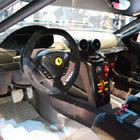
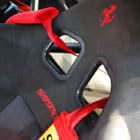
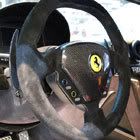
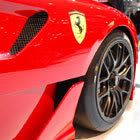
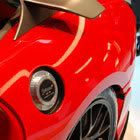
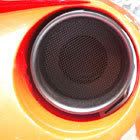

The Perusahaan Otomobil Kedua Sdn Bhd (Perodua) has releasing the statement of publishing the new MPV model after the launching of Perodua Nautica on 9 May 2008. The Manager, Datuk Hafiz states that the new car will be MPV or SUV family but since they’d launched Perodua Natica, MPV will exactly be the following upcoming model and will be releasing this year of 2009.

It is uncovered that Perodua MPV will be using the established of Toyota Passo Sette, which means Passo Seven, or a 7-seater version of the Toyota Passo in Italian. The Daihatsu version is called the Daihatsu Boon Luminas, the combination of the words convenient and luminous.

Both are powered by the 1.5 liter 3SZ-VE engine, 109 PS at 6,000rpm and 141Nm of torque at 4,400rpm with front wheel drive and 4WD variants of 4 speed auto. The front wheel drive rated at 15.6km per liter.nToyota Passo Sette measures 4,180mm long, 1,695mm wide and 1,620mm tall, with a long 2,750mm wheelbase to get utmost interior space of 2,550mm long, with 5.2m working radius.

It is exactly what you’ve been wishing for – a vehicle that is as is captivating as it is accommodating. With a bold design complemented by impressive functionality and generous capacity. Introducing the crossover vehicle you really want – the 2009 Chevrolet Traverse. With seating for eight across three rows, plus a class-leading maximum cargo area. † And peace of mind enhanced by the highest possible U.S. government frontal and side-impact crash test ratings – five stars.** Powered by a technologically advanced 3.6L V6 engine that delivers inspiring performance and enviable fuel efficiency. With world-class quality and Chevrolet’s proven dependability. The very beautiful, yet exceptionally practical 2009 Chevrolet Traverse.

Chevrolet Traverse has just won a Consumers Digest Best Buy Award and has also been named one of 2009's Best New Family Vehicles by Kelley Blue Book's® kbb.com - edging out the field with its outstanding value, excellent fuel efficiency and best-in-class cargo space.

The Chevrolet Traverse has been named one of 2009's Best New Family Vehicles by Kelley Blue Book's® kbb.com. Edging out the field with its low starting price, excellent fuel efficiency and best-in-class cargo space. Your lifestyle, your vehicle - made affordable.

The sculpted lines create a potent presence, further enhanced by such striking details as the standard jewel-like dual halogen projector headlights and the 20” ultra-bright aluminum wheels on LTZ. A closer look reveals tight-fitting body panels that uphold world-class quality standards.

Traverse’s comprehensive safety package includes features that help prevent an incident, such as the standard StabiliTrak™ electronic stability control system and the available Rear-view Camera System. Should a collision prove unavoidable, Traverse is equipped with six standard air bags and OnStar ®.

Traverse offers standard seating for eight – friends, family or car-pooling colleagues. As for their stuff, there’s a class-leading cargo space behind the third-row seat and a class-leading maximum cargo space of 3297 L (116.4 cu. ft.). † And the Smart Slide™ second-row seat makes it easier to get into the third row, or to maximize the cargo area.

It isn’t only the cabin’s style that’s unique – it’s also the refinement. That’s particularly true of Traverse LTZ, which features the only heated and cooled front seats in its class, †† top-stitched perforated leather-appointed first and second-row seating and automatic tri-zone climate controls.

The technologically advanced 3.6L V6 engine generates impressive power with remarkable fuel efficency, thanks to Spark Ignition Direct Injection (SIDI) and Variable Valve Timing (VVT). Output is 281 horsepower on LS and LT models – and a class-leading 288 standard horsepower on LTZ .†† The standard six-speed automatic transmission further enhances fuel efficiency.
Tata Nano is not aloof the ability of Ratan Tata's affiance to average chic Indians, but is India's affiance to the apple and a bright clear announcement that on the canicule to appear the apple has to attending into India to see innovation, assurance and abstruse domination. As the abundant accessible 1 lakh car was apparent at the Auto Expo in New Delhi, Indian people, who cannot allow a car that crosses few lakhs, accept already placed themselves, at atomic in their dreams, abaft the auto of this admirable car called Tata Nano. The car grabs absorption from about the apple not alone for the low amount but additionally for the admirable looks and arresting features. As Ratan Tata again mentioned during the actualization ceremony, Nano is not aloof a car but, is anarchy of addition or a adventure to conquer, a acquisition for administration and a acquisition for accomplishing new avenues.
The car grabs absorption from about the apple not alone for the low amount but additionally for the admirable looks and arresting features.
Nano is an adorable and admirable 4-door car .The car is fabricated for bristles bodies to be built-in and the agent of the car is amid at the aback of the car. Initially the car is launched in three colours- Red, White and Ablaze green. The car will additionally be advancing in two versions one is the accepted adaptation that is apparent by the distinct blush interiors, two batten council caster and vinyl akin seats. Alike admitting the car doesn't accord to the affluence range, Tata affairs a affluence adaptation for Nano with bifold blush interiors, three batten council wheel, bolt seats and anatomy blush bumpers .The affluence adaptation will additionally be able with august animate wheels, fog lamps, axial locks, ability windows and A/C agent administration arrangement with heater.
The car will be able with 2-cylinder, 623 cc engine. Alike admitting the accepted barrage is a petrol agent agent models are additionally in the calendar of the company. The multi-point fuel-injection petrol agent is rear army and for the aboriginal time the car has been able with two-cylinder gasoline engine. The architecture of the car has fabricated it to be ablaze weight apparatus and gets best ability per assemblage of activity consumed. The breadth of the car is 3.1 meters that is 8% abate from the exoteric than the Maruti 800 but the car is 21% added ample than Maruti 800.The amplitude of the car is 1.5 meters and acme is 1.6 meters.
When it comes to the assurance of the car, an cyberbanking agent administration arrangement is able to ascendancy achievement of the car. The car can run up to the acceleration of 90km/h. The area metal anatomy of the car is activated for crumple zones and intrusion-resistant doors. The car has able seat-belts, and anchorages and the rear tailgate bottle is affirmed to the body. The tyres of the car are tubeless. As Nano is an ecology affable vehicle, the abuse akin is abundant lower, alike bottom than two wheelers. The car has a ammunition ability of 20 km/liter and the ammunition catchbasin accommodation is 30 liter.
The Tata Nano car is priced Rs 1 lakh (US$2500, GB£1277, €1700 ). The car will be accessible in the bazaar for about $3000 or Rs 1 lakh 30 thousand afterwards the taxes and allowance is added to the cost. The amount of the affluence adaptation has not been declared by the Tata Motors and it is accepted to be a bit higher.
When expectations are sky aerial about the car, bodies acquisition allowance for anxieties too back a car, which every Indian can own, is launched. Narrow Indian anchorage accept no added amplitude for few added new cartage to ply on. Once the Nano alcove the bazaar they will add few added lakhs to the cardinal of Indian agent citizenry which, in fact, will aftereffect in hours-stretching cartage blocks. As the ammunition burning would be doubled, the ammunition amount is accepted to beat to capricious heights. Experts accept already pin acicular their suggestions to abstain the anarchy on roads, like re-arranging alley administration system, developing added townships to abandon burghal population, addition anchorage etc... Nano, for sure, is a abstruse anarchy that may change the face of India on the alternating advancing days. Into a bigger India or ballad situations... let us anticipate and see.
Excellent, solid mid-sized Mercedes. But it lacks the sparkle to make it a great car.
This is where the E scores highly. Mercedes hasn't attempted to make a sporty mid-sized exec, just a very good one. So ride comfort both on A-roads, in town and on larger routes is very well-judged and the auto 'boxes (five-speeders on the four-pots and 7G-Tronic seven-speeders on the V6s, E500 and AMG V8) are very nice to use. There's no false modesty here - just a well put together, quiet and efficient car.
15 out of 20Think about this: nine out of 10 new Es sold in the UK in the final days of the last generation were diesel. Now, there's a 2.15-litre four-cylinder diesel on offer that does duty in the E200, E220 and E250CDI, though with different outputs for each. The top E250CDI humps out 204hp and 369lb ft, good for 62mph in 8.2 seconds, 151mph and comfortably over 50mpg on the combined cycle. The bigger engines are V6s, topped off with the V8s in the E500 (388bhp) and E63 AMG (518bhp, 0-62mph in 4.5 seconds, 155ph max and 22.4mpg).
14 out of 20The E isn't cool so much as superbly rational. People will respect the choice, but it won't tempt a Page 3 girlfriend.
8 out of 20Merc back on form here with a car that might lack the techno-festival of the S-Class, but nevertheless remains a sober, solid performer. Feels like it'll go for ages if the materials and fit are anything to go by - and it'll need to; it's going to end up as a German beige taxi doing 120,000km a year, isn't it?
15 out of 20There's no pretention to making the E-Class the best handling car in the class, but that doesn't mean that it is actively bad, more that it is definitely more skewed towards driving comfort. OK, so the E63 will be mental, but the normal cars are comfortable and stately rather than tyre-smoking. This car is great for long journeys, less so for honing about. It might lean a bit on tight corners, but it also soaks up potholes like a good 'un. A decent trade off for the type of car, we reckon.
10 out of 20Mercedes has the CLS for being all swoopy, so the E-Class is actually quite boxy. And boxy is good when you're talking practicality. There's a huge boot, great space for real humans in the front and the back and a general feeling that you could live your life in this car - something that those Berlin taxi drivers might well end up doing. Add to that efficient engines and you're on to a winner.
15 out of 20Even that most powerful version of the 2.15-litre diesel gets comfortably over 50mpg and only chucks out 139g/km of C02. The story is the same across the revised range: better torque, reduced C02, better efficiency. Residuals will undoubtedly be good, insurance mid-level depending on engine (the E63 will be supercar-unfriendly on your wallet), and the general ownership prospect looks very healthy.
2 out of 20